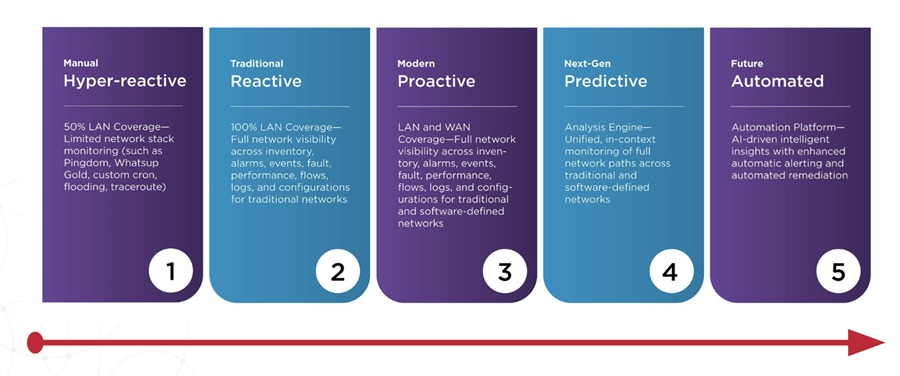Executives from proactive organizations reported using performance management strategies to deliver innovation and meet broader business goals, and implementing application performance management (APM) tools with advanced monitoring features such as real-time user experience monitoring, and providing a composite view of log and performance data, according to Driving Business Performance Through Application Performance Management, a new report from GigaOm, sponsored by SolarWinds.
"Technology professionals that leverage performance management and monitoring tools to achieve high-level business goals — surpassing downtime, poor connection, and slow performance to create a truly customer-centric user experience — enjoy better chances of keeping pace in ever-changing markets and achieving overall business success," said Denny LeCompte, GM, Application Management, SolarWinds. "Integrating robust APM tools presents the opportunity to transform any business and create a strong competitive advantage."
However, the report also revealed another trend — the majority of business leaders set priorities based on what can be easily fixed versus what matters most to customers. For 61 percent of business leaders surveyed, the primary driver of performance management strategies is to diagnose and resolve problems as quickly as possible, followed by managing the complex application environment (57 percent). These organizations were categorized as reactive, driven by managing day-to-day tasks and troubleshooting application issues, rather than a focus on end-user experience.
Report findings included:
Primary Driver of Application Performance Management Tools and Strategies
■ The primary driver, according to 61 percent of executive decision makers from reactive organizations, is to diagnose and fix problems
■ The second driver is managing complex application environments (57 percent).
■ Both criteria are seen as a higher priority than delivering the best possible customer experience (52 percent). While it's important to troubleshoot issues, this suggests that priorities are set by looking at what can easily be fixed first, versus prioritizing what matters most to customers.
Prioritization of Criteria Related to Customer Experience
■ 66 percent of proactive organizations see customer experience criteria as important, compared to only 34 percent of reactive organizations.
■ Proactive respondents were nearly twice as likely to value customer experience criteria as important. All criteria matter, but for the proactive group, customer-related criteria matters the most.
Most Important Features of APM Tools
■ 65 percent of proactive organizations have comprehensive performance monitoring coverage of the DevOps toolchain, compared to 18 percent of reactive organizations.
■ Proactive organizations consistently value more advanced APM features (54 percent), such as:
- measuring user experience in real time (44 percent)
- providing a composite view of log and performance data (35 percent)
- having a live tail feed of logs and other data sources (32 percent)
■ Contrarily, reactive organizations value advanced features by under 30 percent.
Methodology: The report is based on a survey fielded in March 2019, which yielded 358 responses from business professionals including direct/department heads, CIO/CTO, VP/assistant VP, CEO, general manager, president, SVP, CFO, partner/chairman/board member, COO, and CDO, operating in organizations that have between 500 – 10K+ employees from various vertical markets.


